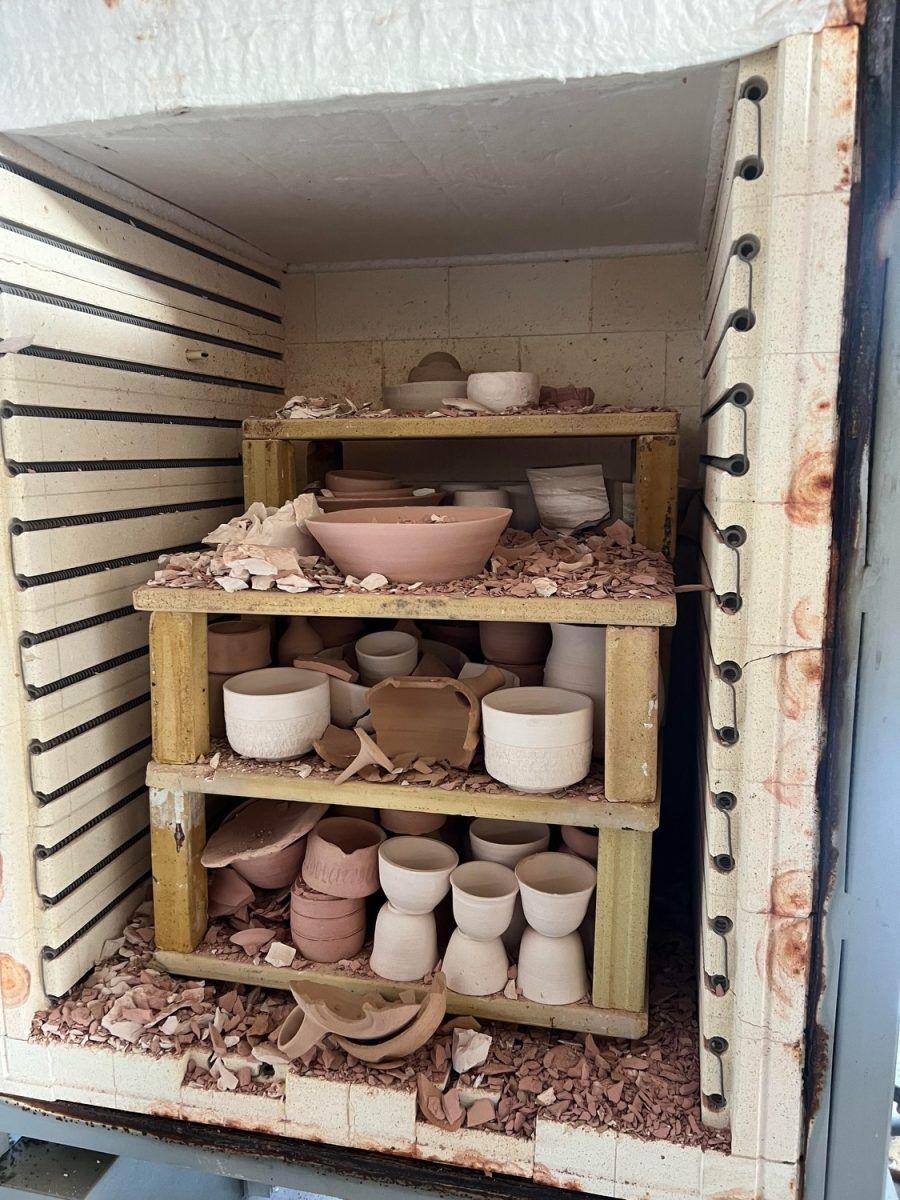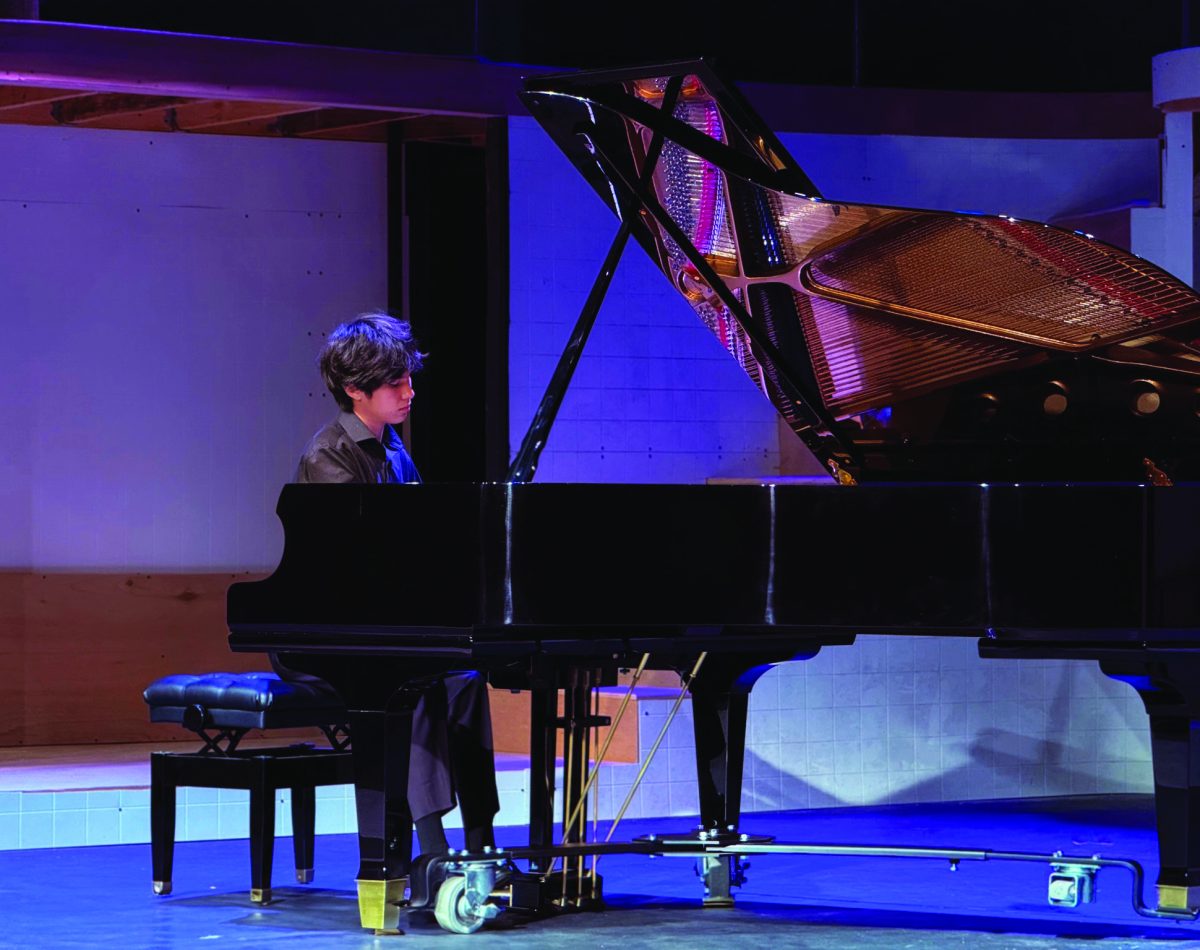Ceramics teacher Nicole Stahl explained that a part in the kiln called the relay stopped working, causing the error.
“Kilns are made of many components, and as the kiln ages, parts go bad,” Stahl said. “Normally, a kiln holds at a low temperature for a day or two, then slowly comes up to firing temperature. During this particular firing, one of the components, called a ‘relay’, went bad. The bad relay stuck on, and the element, the component that provides the heat, was subsequently also stuck on, meaning instead of slowly rising, the kiln went up in temperature quickly. Any piece that had moisture in it cracked into pieces.”
3D Art: Ceramics/Sculpture student Kara Horacek ’27 was able to find a positive side to the situation.
“For me personally, half the fun of pottery is destruction, so while a part of me was let down that some pieces I had exploded, it was less pottery to store in my house and an excuse to make more,” Horacek said. “But a part of me did wish I had gotten the pieces back because there’s this really cool reconstruction style of pottery called Kintsugi [where pottery] becomes more beautiful for having been broken.”
Stahl said the ceramics department was able to quickly recover from the incident.
“Mr. Godoy replaced the relay that week, did a test firing, and we were back in business by the week after,” Stahl said.



























Riya Iyer • Nov 20, 2024 at 6:56 pm
Brilliant piece! James and his fantastic ability to effectively capture the news never fails to astound me.